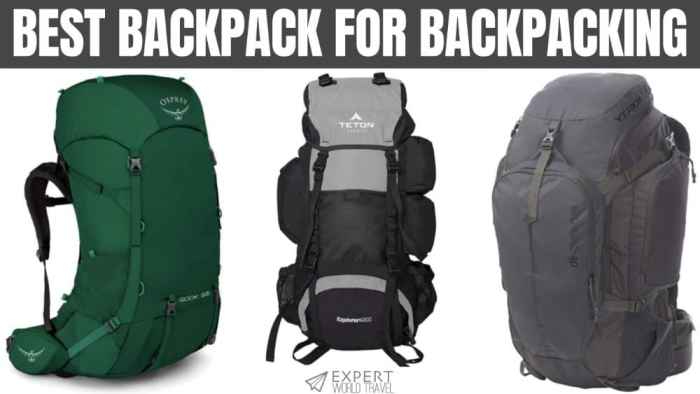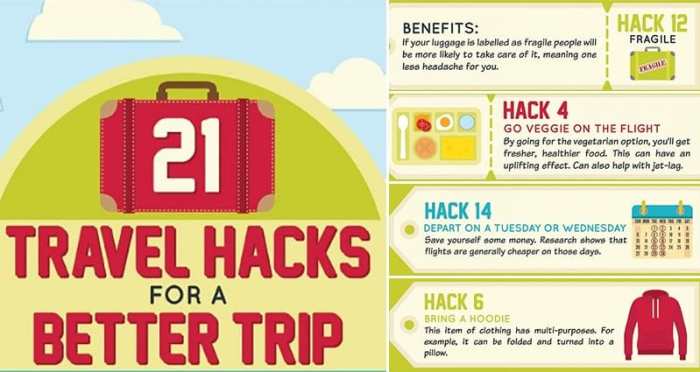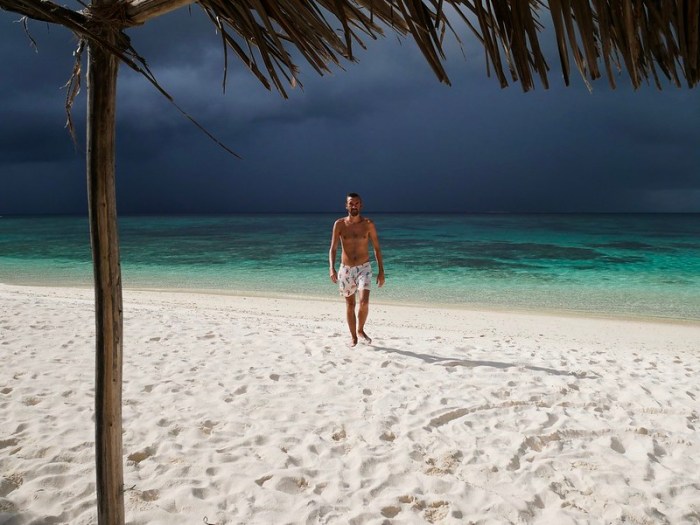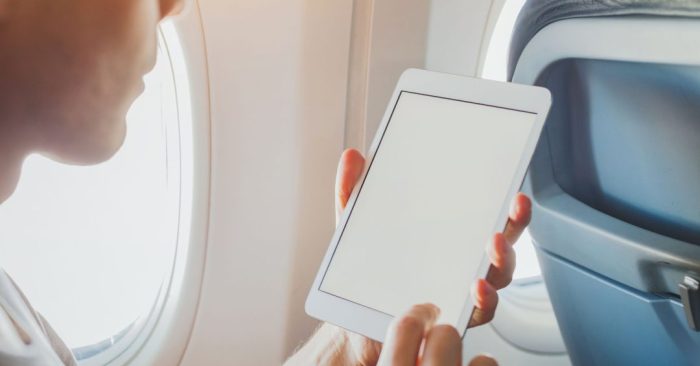Best places to backpack in the world offer a diverse range of experiences, from vibrant Asian cities to breathtaking South American landscapes. This guide delves into the top destinations, catering to various backpacking styles, whether you prioritize budget travel, thrilling adventures, or immersive cultural immersion. Each region offers unique opportunities for exploration and connection with local communities, making for unforgettable journeys.
This comprehensive guide explores the best backpacking destinations across the globe, highlighting the unique attributes that make each location special. From bustling Asian markets to the towering peaks of South America, and the historic charm of Europe, we’ve curated a list of must-visit destinations for the intrepid backpacker. Whether you’re seeking budget-friendly thrills or cultural immersion, this guide provides essential information for planning your next adventure.
Introduction to Backpacking Destinations

Source: hergamut.com
Backpacking, a mode of travel characterized by exploring destinations on a budget while immersing oneself in local cultures, has become increasingly popular. This approach offers a unique opportunity to connect with diverse communities and landscapes, forging personal growth and creating lasting memories. Its appeal lies in the freedom it affords, allowing travelers to shape their journeys according to their own interests and pace.
The key is finding the right balance between budget, adventure, and cultural experiences.Locations suitable for backpackers must offer a harmonious blend of accessibility, budget-friendliness, and opportunities for cultural immersion. Accessibility involves ease of transportation, both within the destination and to get there. Budget-friendliness considers affordability of accommodations, food, and activities. Cultural immersion necessitates exposure to local customs, traditions, and ways of life.
These elements, combined, contribute to a rich and rewarding backpacking experience. Defining “best” in this context is subjective and depends on individual priorities. For some, a budget-focused trip to Southeast Asia might be the ultimate experience, while others might prefer the adrenaline rush of a multi-day trek through the Andes.
Defining the “Best” Backpacking Destination
The “best” backpacking destination is a personalized experience. It’s not a singular location, but a combination of factors tailored to the individual backpacker’s preferences. Factors include the desired level of adventure, budget constraints, and cultural immersion goals. Ultimately, the “best” destination is one that maximizes these aspects for the specific backpacker.
Exploring the best backpacking destinations globally often involves meticulous research. Understanding the nuances of international travel is key to a successful trip, and Travel resources can significantly aid in this process. From Southeast Asia’s vibrant cultures to South America’s breathtaking landscapes, the best backpacking destinations offer unparalleled experiences and unforgettable memories.
Backpacking Styles and Ideal Destinations
Different backpacking styles cater to varied interests and budgets. This table categorizes styles and associated ideal destinations.
| Backpacking Style | Ideal Destinations |
|---|---|
| Budget | Southeast Asia (Thailand, Vietnam, Cambodia), Eastern Europe (Czech Republic, Poland), South America (Bolivia, Ecuador) |
| Adventure | Nepal (Himalayan treks), Patagonia (hiking trails), Iceland (volcanoes and glaciers) |
| Cultural Immersion | Morocco (medina exploration), Japan (tea ceremonies and temples), Peru (Inca ruins) |
Asia’s Backpacker Hotspots
Asia beckons with a vibrant tapestry of cultures, ancient histories, and breathtaking landscapes. For the budget-conscious traveler seeking immersive experiences, backpacking through Asia offers unparalleled opportunities to connect with local communities and discover hidden gems. From bustling metropolises to serene mountain villages, the continent presents a diverse range of experiences, catering to a wide spectrum of interests.Asia’s backpacking scene offers a dynamic mix of well-established tourist hubs and emerging destinations, each with its own unique charm.
Exploring the world’s best backpacking destinations often involves meticulous planning, and for those seeking shorter, local adventures, discovering hiking sites near me can be equally rewarding. Finding the perfect balance between global exploration and accessible outdoor experiences is key. For instance, consider exploring the trails and scenic viewpoints near you before embarking on a grand backpacking journey. The best places to backpack in the world often offer stunning scenery and challenging routes, and local hiking sites near me can be a great way to prepare for those more ambitious adventures.
hiking sites near me are a fantastic starting point for honing skills and appreciating the natural beauty around you, which ultimately enhances your backpacking experience.
The accessibility of transportation, coupled with the affordability of accommodations and food, makes it a prime region for budget-conscious adventurers. Moreover, the region’s rich tapestry of traditions, festivals, and culinary delights provides a wealth of cultural immersion opportunities.
Thailand’s Backpacking Appeal
Thailand’s popularity as a backpacking destination stems from its affordable prices, diverse landscapes, and vibrant culture. From bustling city streets to serene beaches, Thailand caters to various interests. The country boasts a well-developed infrastructure for backpackers, with readily available transportation options and numerous budget-friendly accommodations. Chiang Mai, in particular, is a favorite among backpackers for its relaxed atmosphere, vibrant night markets, and opportunities for cultural exploration.
Vietnam’s Culinary and Cultural Delights
Vietnam’s backpacking scene is characterized by its delicious street food, rich history, and friendly people. Hanoi, with its ancient temples and bustling markets, offers a unique blend of tradition and modernity. The country’s impressive array of landscapes, from the iconic Ha Long Bay to the Mekong Delta, provides diverse outdoor adventures. Backpackers appreciate the affordable cost of living and the opportunity to connect with the local culture.
Exploring the best backpacking destinations globally often hinges on the cost of a round-the-world plane ticket. Factors like route, season, and airline choices significantly impact the price, making a thorough research into round the world plane ticket price crucial. Ultimately, understanding these factors allows backpackers to prioritize destinations based on their budget and tailor their trip accordingly.
Nepal’s Himalayan Majesty
Nepal is a haven for adventure-seeking backpackers, drawing travelers to its breathtaking Himalayan peaks. Kathmandu, the capital, offers a blend of historical sites, vibrant marketplaces, and cultural immersion opportunities. The country’s trekking trails cater to various skill levels, allowing visitors to experience the majestic beauty of the Himalayas. The vibrant culture and the friendly locals make Nepal a deeply rewarding backpacking destination.
Budget-Friendly Food Options
| Country | City/Region | Food Recommendations |
|---|---|---|
| Thailand | Chiang Mai | Khao Soi, Pad Thai, street food (Roti, mango sticky rice) |
| Vietnam | Hanoi | Pho, Banh Mi, Goi Cuon (fresh spring rolls) |
| Nepal | Kathmandu | Dal Bhat, Momos, street food (various vegetable dishes) |
South America’s Hiking & Adventure
South America, a continent brimming with diverse landscapes, beckons intrepid backpackers with its challenging yet rewarding hiking trails. From the towering Andes to the lush Amazon rainforest, the region offers a plethora of experiences for those seeking adventure and cultural immersion. The varied terrains, from snow-capped peaks to dense jungles, cater to different levels of hiking experience, promising breathtaking vistas and unforgettable wildlife encounters.South America’s allure for hikers extends beyond its dramatic scenery.
The region boasts a rich tapestry of indigenous cultures, offering opportunities to interact with local communities and learn about their traditions. Furthermore, the unique blend of ancient history and modern vibrancy creates a captivating atmosphere for exploration. This unique blend of nature, culture, and adventure is a significant draw for the backpacking community.
Popular Destinations for Backpacking Adventures
South America presents a diverse range of backpacking destinations, each offering distinct hiking experiences. Popular choices include the Andes Mountains, the Patagonia region, and the Amazon rainforest, among others. The Andes, with its towering peaks and varied altitudes, attract mountaineers and hikers alike. Patagonia, renowned for its dramatic landscapes and challenging trails, caters to those seeking rugged adventure.
The Amazon rainforest, with its dense vegetation and unique wildlife, offers a different kind of immersive experience. These regions, with their diverse offerings, cater to varying levels of backpacking experience.
Unique Aspects of Trekking and Hiking
The unique aspects of trekking and hiking in South America are rooted in the region’s varied topography and cultural richness. The Andes, with their challenging ascents and high-altitude conditions, demand meticulous planning and acclimatization. Patagonia, with its rugged terrain and unpredictable weather, necessitates robust preparation and experience. The Amazon, with its dense vegetation and diverse wildlife, presents a different set of challenges and rewards.
Each region offers unique and unforgettable experiences for the backpacker.
Landscapes and Wildlife, Best places to backpack in the world
South America’s landscapes offer a stunning variety of experiences. The Andes Mountains, with their snow-capped peaks and alpine meadows, provide breathtaking panoramas. Patagonia showcases dramatic glaciers, turquoise lakes, and rugged mountainscapes. The Amazon rainforest teems with vibrant flora and fauna, from towering trees to exotic birds and elusive mammals. These diverse landscapes and unique ecosystems are a significant part of the appeal of backpacking in South America.
Necessary Preparations and Safety Precautions
Thorough preparation is crucial for safe and enjoyable backpacking trips in South America. Acclimatization to altitude is paramount for trekking in the Andes. Proper clothing and gear are essential for all conditions, as weather can change rapidly. Backpackers should familiarize themselves with local customs and etiquette to ensure respectful interactions with local communities. Safety precautions should include carrying essential medications, practicing safe food handling, and informing someone of travel plans.
Essential Gear for Backpacking
- Backpack: A durable backpack with sufficient capacity for carrying essential gear is crucial. A well-fitted backpack is essential for comfortable carrying.
- Hiking Boots: Sturdy, waterproof hiking boots are essential for traversing diverse terrain. Proper footwear is vital for comfort and safety.
- Clothing: Layered clothing is vital for adapting to changing weather conditions. A rain jacket and warm layers are highly recommended.
- First-Aid Kit: A comprehensive first-aid kit should contain essential medications, bandages, and antiseptic solutions. This is essential for treating minor injuries and ailments.
- Navigation Tools: Maps, compasses, and GPS devices are crucial for navigation, especially in remote areas. This helps in tracking progress and preventing getting lost.
Europe’s Historical & Cultural Experiences

Source: theyearsareshort.com
Europe, a tapestry woven with centuries of history and culture, offers a rich and rewarding backpacking experience. From ancient ruins to bustling city centers, the continent boasts a wealth of historical landmarks and cultural traditions waiting to be explored. This exploration extends beyond the typical tourist traps, allowing for immersive encounters with local life and a deep understanding of European heritage.The diverse historical and cultural experiences across Europe provide a unique opportunity for backpacking travelers to delve into the past and appreciate the present.
This journey allows one to witness the evolution of architecture, art, and societal norms, offering a profound perspective on human history. The continent’s many cities, each with its own distinctive narrative, allow backpackers to discover hidden gems and gain a comprehensive understanding of European identity.
Significant Backpacking Destinations for History & Culture
European cities renowned for their historical significance and cultural vibrancy offer compelling destinations for backpackers. Cities like Rome, Paris, and London stand as iconic examples of historical grandeur, while cities like Prague, Budapest, and Vienna provide a unique blend of history and contemporary life. Each offers a distinct cultural atmosphere, with varying architectural styles, historical narratives, and artistic expressions.
A backpacking trip through these cities can allow for a multifaceted and enriching cultural immersion.
Historical Landmarks and Their Significance
Europe’s historical landmarks hold immense significance, representing pivotal moments in human history. The Colosseum in Rome, for instance, stands as a testament to Roman engineering and power. Similarly, the Acropolis in Athens embodies the zenith of ancient Greek civilization. These landmarks, along with countless others across Europe, serve as tangible reminders of the past and provide insight into the lives of those who came before.
Budget-Friendly Accommodation for Backpackers
Backpackers in Europe can find a variety of budget-friendly accommodation options. Hostels, a popular choice, offer a social atmosphere and shared spaces, while guesthouses and budget-friendly hotels provide a more private environment. These options, coupled with a well-planned itinerary, can allow travelers to maximize their time and spending on cultural experiences. Furthermore, using online booking platforms and comparing rates can significantly reduce the costs of accommodation.
Experiencing Local Culture
Immersing oneself in the local culture is crucial for a rewarding backpacking experience. Engaging in local customs, trying regional cuisine, and participating in local events are essential elements of a truly immersive journey. This can be achieved through attending local festivals, taking cooking classes, or simply striking up conversations with locals. By actively participating in the daily lives of the communities, backpackers can uncover the true essence of the destination.
Comparing Historical and Cultural Experiences
The historical and cultural experiences in European cities differ significantly. For example, while Rome offers a vast array of ancient Roman ruins, Paris showcases a rich artistic and architectural heritage. Similarly, London embodies the dynamism of a global metropolis while retaining its historical core. Each city’s distinct characteristics provide unique opportunities for exploring diverse aspects of European history and culture.
The comparison between these cities reveals the multifaceted nature of the European experience.
Examples of Budget-Friendly Accommodation Options
Examples of budget-friendly accommodation options for backpackers include hostels, guesthouses, and budget-friendly hotels. Hostels provide a social environment with shared facilities, while guesthouses offer a more private experience. Budget-friendly hotels offer a comfortable stay without breaking the bank. These options cater to a variety of preferences and budgets, making travel accessible to a wide range of backpackers.
North America’s Natural Wonders

Source: expertworldtravel.com
North America boasts a breathtaking array of natural landscapes, from towering mountains and cascading waterfalls to vast wilderness areas and coastal shores. These destinations offer unparalleled opportunities for backpacking, immersing oneself in the raw beauty and solitude of the continent. Backpacking in North America often involves a mix of physical exertion and environmental appreciation, making it a rewarding experience for those seeking adventure and connection with nature.
Backpacking Destinations in North America
North America presents a plethora of destinations ideal for backpacking. From the iconic trails of the Appalachian Trail to the rugged wilderness of the Pacific Northwest, the continent offers diverse landscapes catering to various preferences. Popular destinations include the Canadian Rockies, the Sierra Nevada mountain range in California, and the Olympic National Park in Washington. Each location presents a unique set of challenges and rewards, making the selection process crucial for a successful trip.
Types of Trails and Landscapes
North American backpacking trails vary considerably in terrain and difficulty. The Appalachian Trail, for example, is a well-established long-distance trail, primarily featuring wooded terrain and gradual ascents. Conversely, the Pacific Crest Trail traverses diverse landscapes, including high mountain passes, deserts, and forests, presenting more demanding conditions. Furthermore, the Canadian Rockies provide opportunities for backpacking in alpine meadows and along glacial streams, while national parks such as Yosemite and Glacier offer unique combinations of trails and landscapes.
Best Times to Visit
The optimal time for backpacking in North America varies based on the specific destination and the desired level of comfort. Spring and fall typically offer pleasant weather, fewer crowds, and vibrant natural displays. Summer can be ideal for hiking and enjoying warmer temperatures, though the higher temperatures can also lead to increased humidity and potential for heat exhaustion.
While the allure of backpacking through exotic locales is undeniable, exploring the best places to backpack in the world often starts with a closer look at your own backyard. Finding popular hiking trails near me, like those detailed in this comprehensive guide popular hiking trails near me , can provide a valuable starting point. Ultimately, the best backpacking destinations remain a blend of far-flung adventures and accessible local gems.
Winter, while offering a unique experience, is often associated with harsh weather conditions and limited accessibility. Thorough research into the specific climate and weather patterns of the chosen destination is essential.
Navigating National Parks and Wilderness Areas
Navigation within national parks and wilderness areas requires careful planning and preparation. Knowing the trail conditions, potential hazards, and emergency procedures is crucial. Utilizing detailed maps, compass, and GPS devices is highly recommended. Furthermore, obtaining necessary permits and adhering to park regulations are vital for a safe and respectful experience. Familiarizing oneself with local wildlife and their behaviors is also important for ensuring a safe interaction with the environment.
Camping Regulations in North America
Camping regulations in North America’s national parks and wilderness areas are designed to protect the environment and ensure the safety of visitors. These regulations often include restrictions on campfire sizes and locations, rules regarding waste disposal, and guidelines for leaving no trace. Understanding and adhering to these regulations is crucial for maintaining the pristine beauty of these areas.
Specific regulations vary by location, so it’s important to consult the relevant park authority for precise details.
| National Park | Camping Regulations |
|---|---|
| Yosemite National Park | Campfires are permitted in designated areas only, and stringent rules on waste disposal are in place. |
| Glacier National Park | Backcountry permits are required for overnight stays, and specific regulations apply to campsites. |
Oceania’s Island Adventures
Oceania, a vast archipelago spanning the South Pacific, beckons backpackers with its pristine islands, vibrant cultures, and diverse ecosystems. From the lush rainforests of New Guinea to the coral reefs of the Solomon Islands, the region offers a unique blend of adventure and cultural immersion. Backpacking in Oceania provides unparalleled opportunities to connect with nature and experience the distinct traditions of its indigenous peoples.The islands of Oceania boast a remarkable array of environments, from volcanic peaks to secluded lagoons.
Each island, with its unique geological history, has shaped a distinct ecosystem and rich tapestry of wildlife. The cultural experiences are equally diverse, with a myriad of traditions, languages, and customs reflecting the region’s rich heritage. Exploring these islands necessitates a strategic approach to transportation and cultural immersion.
Best Destinations for Backpacking
The best destinations for backpacking in Oceania vary depending on individual interests. Fiji, with its stunning coral reefs and welcoming hospitality, is a popular choice for relaxation and water sports. The Solomon Islands, renowned for their untouched beauty and abundant marine life, are ideal for those seeking an authentic and less-traveled experience. For hikers and those interested in trekking, Papua New Guinea offers a challenging yet rewarding journey through dense jungles and diverse landscapes.
New Zealand, a more developed destination, offers a blend of natural beauty and adventure activities, making it a fantastic choice for those seeking a mix of relaxation and exploration.
Diverse Ecosystems and Wildlife
Oceania’s islands are a biodiversity hotspot. Coral reefs teeming with vibrant fish and other marine life are a common sight. The islands’ rainforests support a remarkable variety of bird species, including many endemic ones found nowhere else. Reptiles, amphibians, and insects also exhibit significant diversity, showcasing the unique evolutionary adaptations that have occurred on these isolated islands.
The region’s diverse environments create a rich habitat for wildlife, making it a paradise for nature lovers and wildlife enthusiasts. For instance, the Great Barrier Reef, a World Heritage site, exemplifies the stunning marine biodiversity.
Unique Cultural Experiences
The cultural tapestry of Oceania is as diverse as its landscapes. Each island nation possesses a rich history and distinct cultural traditions. Indigenous communities have developed intricate systems of belief, rituals, and art forms, reflecting their deep connection to the land and the sea. Learning about and respecting these cultures is crucial for a meaningful and respectful backpacking experience.
Visiting local markets, participating in cultural performances, and engaging in conversations with locals are effective ways to gain a deeper understanding of these unique cultures.
Transportation Options
Transportation options within Oceania vary depending on the destination. Ferries are a common and often scenic way to travel between islands, especially in smaller island nations. Buses are prevalent in larger islands and provide a more affordable means of transport. Flights offer a faster mode of travel between larger islands or countries. Careful planning is crucial to selecting the most efficient and cost-effective method for each leg of your journey.
Experiencing Local Culture
Immersing yourself in the local culture is a key aspect of backpacking in Oceania. Visiting local markets and participating in cultural events, like festivals or ceremonies, can provide valuable insights into the region’s traditions. Respecting local customs and traditions is essential to ensure a positive and respectful experience for everyone. Learning a few basic phrases in the local language, or at least acknowledging the language spoken, is a sign of respect that can greatly enhance your experience.
Engaging with locals, such as taking part in guided tours or simply striking up conversations, can reveal deeper insights into their lives and perspectives.
Tips for Planning a Backpacking Trip
Backpacking offers a unique opportunity to explore the world on a budget, immersing oneself in diverse cultures and landscapes. Successful backpacking, however, hinges on meticulous planning. This comprehensive guide details the essential steps, from destination selection to safety precautions, ensuring a smooth and enriching experience.Choosing the right destination is paramount. Consider your interests, budget, and desired level of adventure.
Research various regions, focusing on those aligning with your preferences. Thorough investigation of the area’s safety and cultural nuances is vital.
Destination Selection and Research
A crucial initial step is to pinpoint a destination that resonates with your interests and aligns with your budget. Extensive research on potential destinations is vital, encompassing cultural norms, local customs, and safety considerations. Consider factors like visa requirements, travel time, and potential cost fluctuations. This research will lay the groundwork for a well-informed decision.
Budgeting and Financial Planning
Creating a realistic budget is essential for any backpacking trip. Estimate costs for flights, accommodation, food, activities, and transportation. Look for cost-effective accommodation options such as hostels or guesthouses. Research local food markets and street vendors for budget-friendly meals. Track expenses meticulously throughout the trip to maintain control over your budget.
Accommodation, Transportation, and Activities
Hostels are popular backpacking accommodations due to their social atmosphere and cost-effectiveness. Other options include guesthouses, budget hotels, and homestays, which offer cultural immersion. Consider public transportation, like buses and trains, as a cost-effective and environmentally friendly option. Local tours and activities can be booked in advance or spontaneously discovered.
Packing Light and Effectively
Minimizing luggage weight is key to backpacking success. Choose versatile clothing items that can be mixed and matched. Pack only essential toiletries and electronics. A well-organized backpack with appropriate compartments will maximize space and accessibility. Prioritize lightweight, durable gear.
Visa Requirements and Local Customs
Thorough research of visa requirements is crucial. Understand local customs and etiquette to avoid misunderstandings and potential problems. Be respectful of local traditions and practices. Research the local customs and traditions before departing to show respect.
Staying Safe and Healthy
Prioritize safety by informing someone of your itinerary and contact information. Be aware of your surroundings and avoid walking alone at night in unfamiliar areas. Obtain necessary vaccinations and travel insurance. Carry a first-aid kit and know basic first-aid procedures. Be mindful of potential health risks and take necessary precautions.
Essential Documents for International Travel
| Document Type | Information |
|---|---|
| Passport | Ensure it’s valid for at least six months beyond your travel dates and has sufficient blank pages. |
| Visa | Obtain the necessary visa(s) well in advance of your trip, adhering to specific requirements for your nationality and destination. |
| Insurance | Purchase comprehensive travel insurance that covers medical emergencies, lost luggage, and trip cancellations. |
Last Point
In conclusion, the world offers a plethora of amazing destinations for backpackers. From the vibrant energy of Asia to the natural wonders of North America and the island paradises of Oceania, the possibilities are endless. Remember to research thoroughly, plan carefully, and prioritize safety and respect for local cultures. Embrace the journey, and create memories that will last a lifetime.
Question & Answer Hub: Best Places To Backpack In The World
What’s the best time to backpack in Southeast Asia?
The best time to backpack in Southeast Asia is typically during the dry season, which generally runs from November to April. This avoids the heavy rains and humidity, making travel more comfortable and enjoyable.
What are some essential documents for international travel?
Essential documents for international travel include a valid passport, any necessary visas, and travel insurance. Check specific requirements for the countries you plan to visit.
What are some tips for staying safe while backpacking?
Staying safe while backpacking involves being aware of your surroundings, keeping your valuables secure, and avoiding risky situations. Research local customs and laws, and inform someone of your itinerary.
How can I stay on budget while backpacking?
Staying on budget while backpacking involves careful planning and making smart choices about accommodations, food, and transportation. Consider hostels, local markets, and public transportation.











